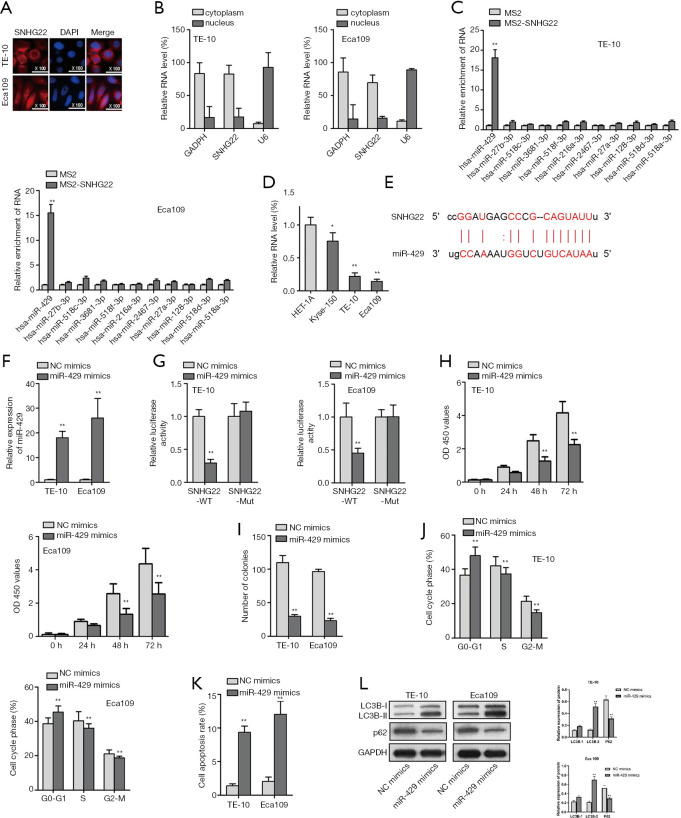Figure 2.
MiR-429 could bind to SNHG22 and act as a tumor suppresser in ESCC cells. (A,B) FISH assay and subcellular fraction assay found the location of SNHG22 in TE-10 and Eca109 cells. (C) MS2-RIP assay found the potential miRNAs who could bind to SNHG22. (D) qRT-PCR assay was implemented to detect the expression of miR-429 in TE-10 and Eca109 cells. (E) The binding site of SNHG22 and miR-429 was presented according to ENCORI (http://starbase.sysu.edu.cn/index.php). (F) The overexpression efficiency of miR-429 was detected by the qRT-PCR assay. (G) Luciferase reporter assay was implemented to assess the binding relationship in SNHG22 and miR-429. (H,I) CCK8 and colony formation assay illustrated the proliferation of TE-10 and Eca109 cells when miR-429 was overexpressed. (J,K) Flow cytometry analysis was used to delineate the cell cycle progress and apoptosis of TE-10 and Eca109 cells. (L) Western blot assay was conducted to verify the autophagy of TE-10 and Eca109 cells when miR-429 was overexpressed. **, P<0.01. SNHG22, small nucleolar RNA host gene 22; ESCC, esophageal squamous cell carcinoma; qRT-PCR, quantitative real-time PCR.

